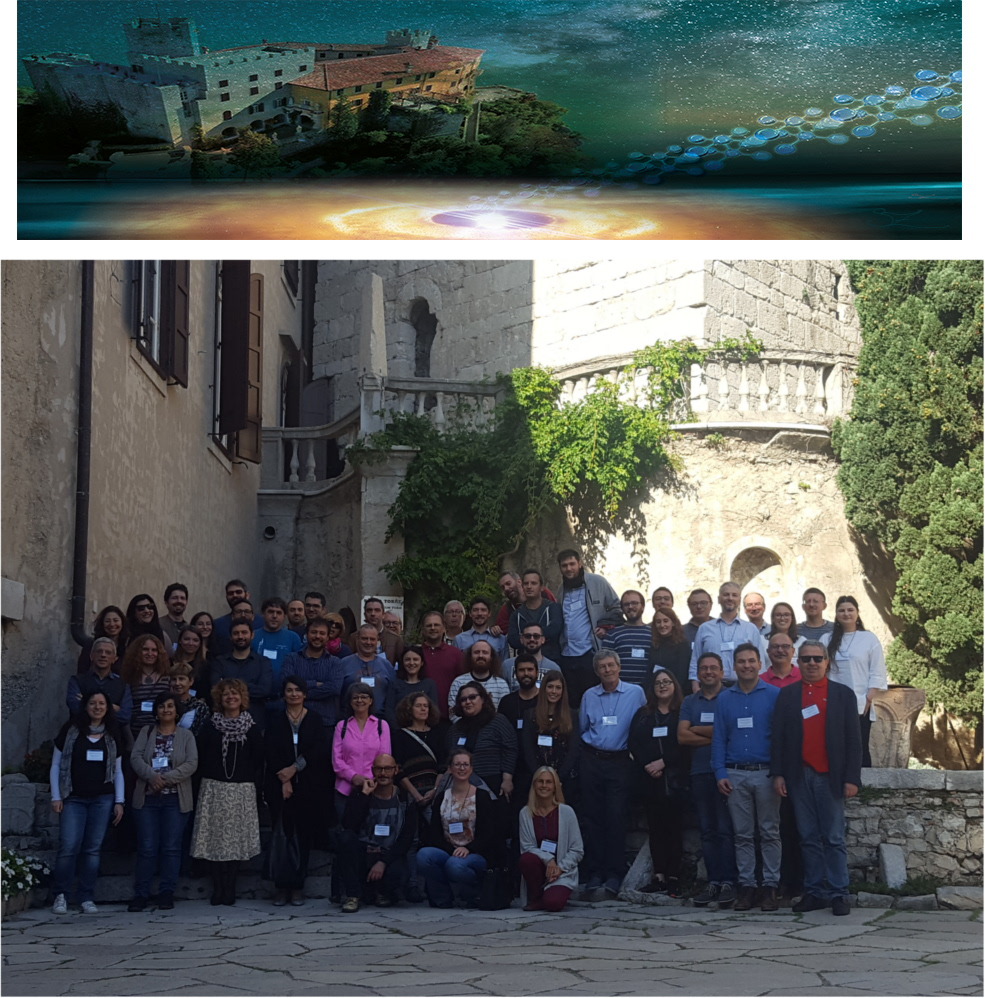Speaker
Description
Protoplanetary disks constitute the primordial environment for the formation of the many planet systems observed up to now. Recent dynamical investigations (see Pfalzner & al, 2015) suggest that the Solar System has been formed in an Open Cluster. This idea has been corroborated by the many recent observations of both disks and planetary systems around stars in open clusters (see, for example Hernández & al, 2010; Mann & al, 2015). A potential new scenario for the planet formation has thus been opened, according to which protoplanetary disks do not evolve as isolated systems but rather may feel the presence of other stars. This scenario has also relevance for the study of mixing and transport of matter within the disk. In particular, of high interest are the mechanisms for the outward transport of high temperature minerals formed close to the Sun and embedded in cometary nuclei formed at large distances from the Sun (Brownlee & al, 2006).
To follow in details the history of a star with a protoplanetary disk embedded in an Open Cluster, we developed a hydrodynamical lagrangian code named GaSPH (see Pinto & al, 2019) through which we evolve the matter of the disk according to the Smoothed Particle Hydrodynamics (SPH) scheme; the disk is self-gravitating, that is takes in proper account the internal gas gravity and the gas-star mutual gravity, and the evolution of a limited number of point-mass objects (which may represent both stars or planets) is treated with a high order explicit method.
The model includes also a radiative transfer SPH scheme (following the schematization of Bastien & al, 2006), which, by assuming that the disk is irradiated by a central star of given temperature and luminosity, allows to describe a physically reasonable propagation of radiation through matter. This addition is very important as the dust temperature is mainly set by the stellar luminosity, while the chemistry of the whole disk depends on the UV and X ray fluxes.
We will discuss our preliminary results applied to the study of the evolution of a protoplanetary disk in an open cluster. We perturb the system by letting it interact with a limited number of close stars, considering, in particular, the close encounter events.
We will focus in particular on the mixing of matter in the young solar environment due to the macroscopic transport of matter due to close fly-bys.
References:
Bastien, P., Cha, S. H., & Viau, S. 2004, in Revista Mexicana de Astronomia y Astrofisica Conference Series, ed. G. Garcia-Segura, G. Tenorio-Tagle, J. Franco, & H. W. Yorke, Vol. 22, 144–147
Brownlee, D., Tsou, P., Aléon, J., et al. 2006, 314, 1711
Hernández, J., Morales-Calderon, M., Calvet, N., et al. 2010, The Astrophysical Journal, 722, 1226
Mann, R. K., Andrews, S. M., Eisner, J. A., et al. 2015, The Astrophysical Journal, 802, 77
Pfalzner, S., Davies, M. B., Gounelle, M., et al. 2015, Physica Scripta, 90, 068001
Pinto, L. D., Capuzzo-Dolcetta, R., & Magni, G. 2019, arXiv e-prints, arXiv:1907.00358

